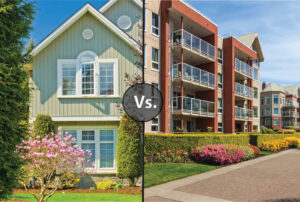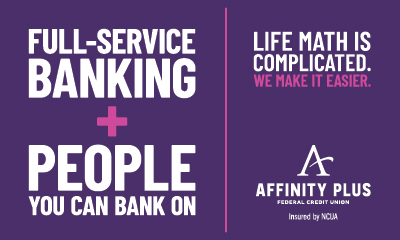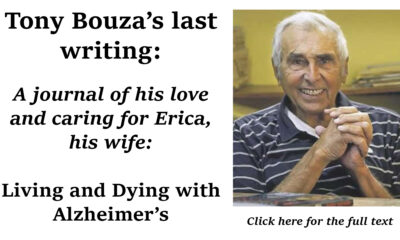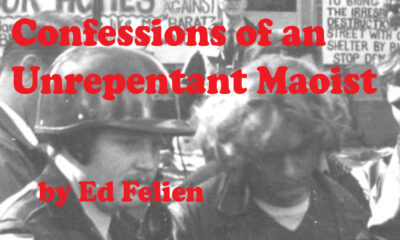BY MYRON ORFIELD
A report released by the Institute on Metropolitan Opportunity details how a $1 billion, “separate but equal,” government-funded strategy in the Phillip’s neighborhood failed.

Single family homes versus apartment buildings
Over the last few decades, housing developers have convinced the government and philanthropists to provide them with $1 billion to improve education, public health, and public safety in the Phillips neighborhood in Minneapolis. Phillips includes roughly 7,500 households, and many of its residents are impoverished and unhealthy. Its children have been performing poorly in school and dropping out, and the area has been riddled with high crime rates. In exchange for the $1 billion, developers have provided 42 percent of all Phillips residents with subsidized apartment units, with the promise that these units would improve health and education and reduce crime in the neighborhood. The advocates of this strategy promised that their strategy would work much better than allowing impoverished Phillips residents the opportunity to live in better neighborhoods.
The public was not aware that new apartments in Phillips would cost one-third more — sometimes twice as much — as they would in suburban areas, such as Dakota County, or that they would rent for more than the existing market rate apartments in Phillips. The developers, who were overwhelmingly white, did not hire disadvantaged residents of Phillips or people of color to build their new homes and get good construction jobs. The public did not know that after it paid for the new apartments, the developers would own them outright and could later sell them and thus get paid twice.
The developers got the $1 billion, but the conditions in Phillips did not improve. In fact, they got worse. Today, Phillips’ residents have the worst public health in the Twin Cities region, among the lowest performing schools (with only around 10 percent of children competent in math and reading), and the highest violent crime rate in the metropolitan area.
Phillips has rates of asthma, Chronic Obstructive Pulmonary Disease (COPD), congestive heart disease, diabetes, high blood pressure, obesity, risk of stroke, and self-reported fair or poor mental health twice as high as those of Minneapolis as a whole, and up to three times higher than more affluent neighborhoods in Minneapolis. The average person in Phillips lives six and one-half years less than those living in the economically stable Bde Maka Ska-Isles and Southwest Minneapolis neighborhoods.
In the public and charter schools within and near Phillips, fewer than 10 percent of Black and Latino children pass basic competency tests in math and fewer than 15 percent pass in reading. Approximately 40 percent of Black or Latino adults in Phillips are high school dropouts.
Violent crime rates in Phillips are seven times the rate of the Twin Cities as a whole and 10 times the rate of nearby Southwest Minneapolis area neighborhoods, making Phillips arguably the most dangerous place to live in the Twin Cities.
Phillips’ education, health, and crime statistics are no better than other Twin Cities neighborhoods of extreme social disadvantage that did not receive this massive affordable housing investment. Equity in Place’s $1 billion strategy to improve education, health, and crime has utterly and completely failed.
The organization named Equity in Place has dominated Twin Cities’ affordable housing policy for over a decade. It has convinced the state, local governments and philanthropists to reject strategies to racially and economically integrate schools and neighborhoods. It has convinced them that the better strategy is to continue concentrating government-supported affordable housing in neighborhoods experiencing the highest levels of social disadvantage. Equity in Place has persuaded government officials and philanthropists that this is a better method to reduce racial, social, and geographic disparities in children’s education and health, and a better approach towards reducing neighborhood crime.
Equity in Place maintains that low-income, non-white residents prefer segregation and do not want to leave neighborhoods with high crime rates and failing schools. Yet decades of surveys and scholarships show just the opposite. Suburban affordable housing units occupied by Black and Latino families have the longest waiting lists. Moreover, overwhelming social science evidence strongly suggests that funding the less expensive suburban projects could have dramatically improved the educational opportunities, and the health and economic wellbeing of thousands of residents in the Twin Cities.
Ironically, there is high demand in the suburbs to build affordable housing that is much less expensive per unit and has lower rents. Over the 12 years, the state housing finance agency — which has been captured by Equity in Place ideology — has turned down 236 requests to use government funds to build housing in white suburbs, while contributing more than $318 million dollars to finance the projects discussed in this paper in the Phillip neighborhood.
The full report is available here:
https:southsidepride.com/wp-content/uploads/2025/05/EIPPHILLIPS.ORFIELD_May5_final.pdf






















